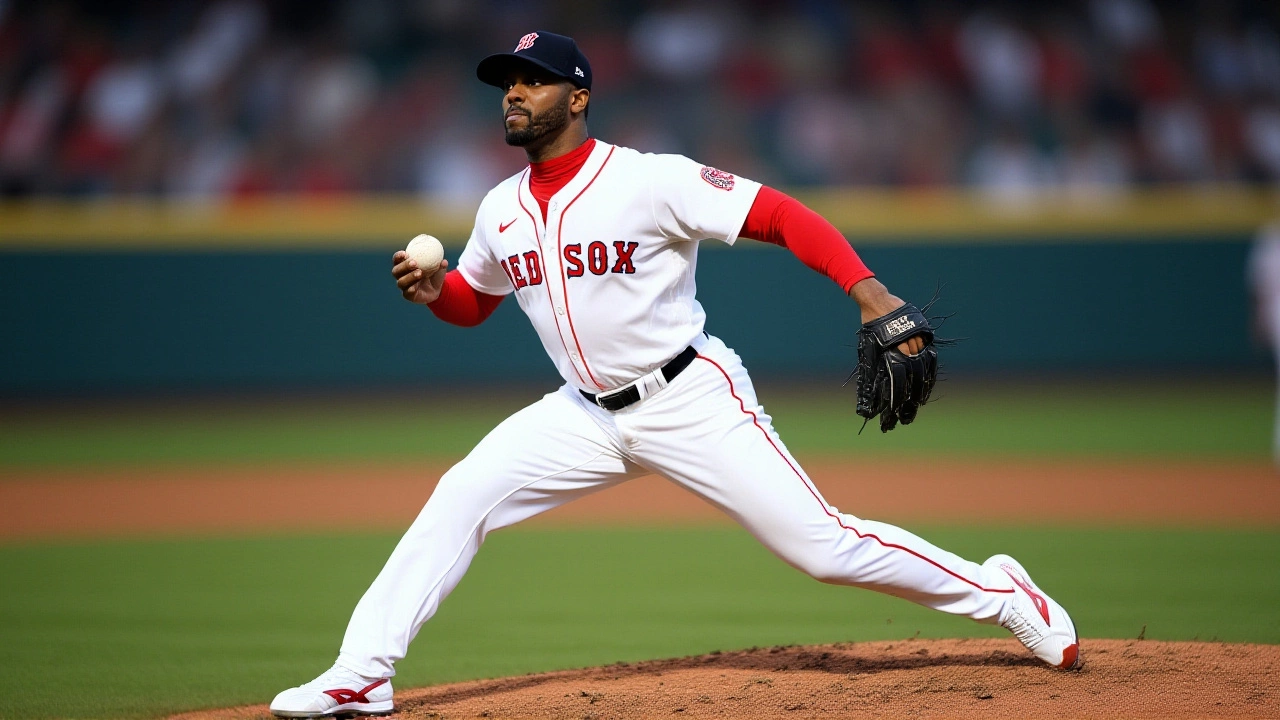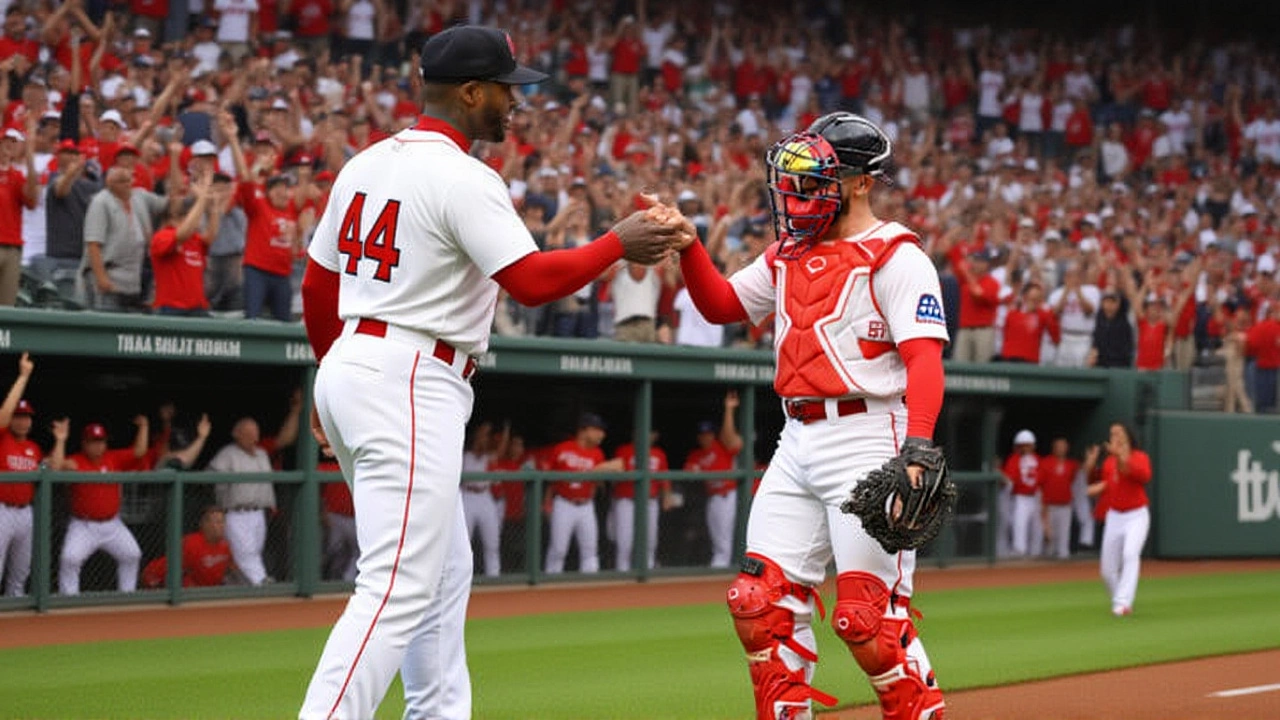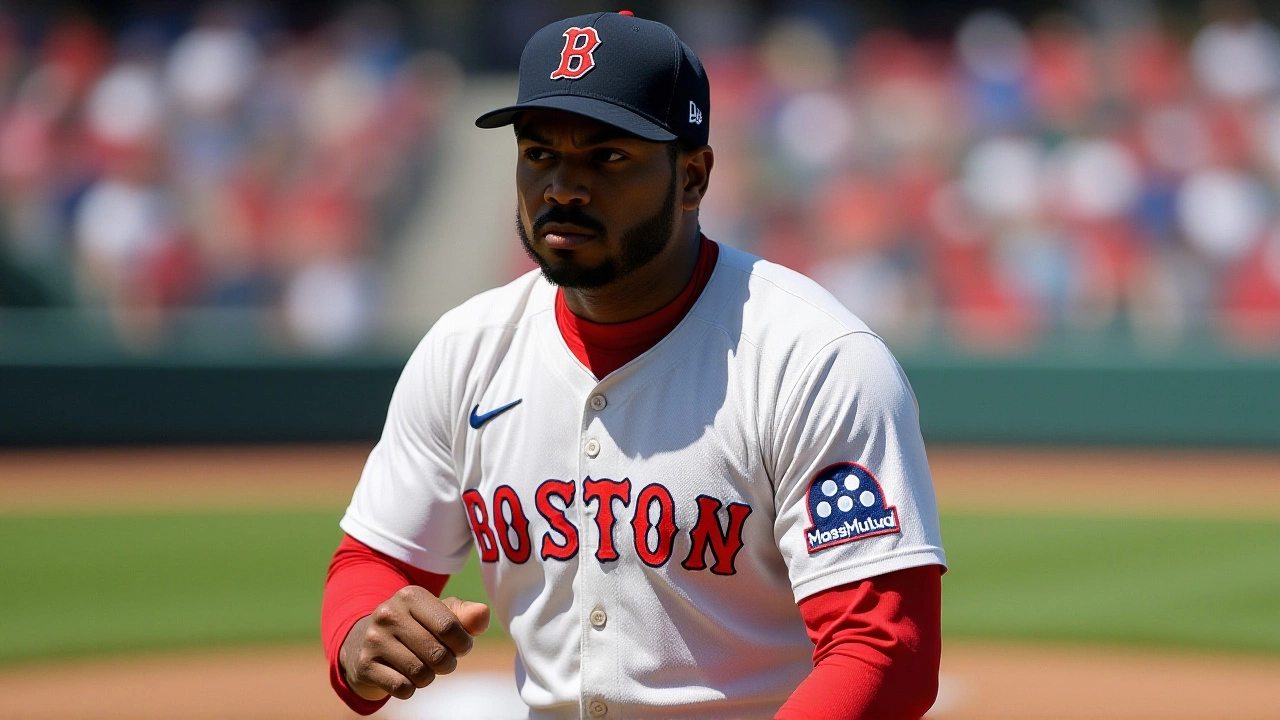When Aroldis Chapman, the 37‑year‑old left‑handed closer for the Boston Red Sox, let his fastball drift toward the middle of the plate during Game 1 of the AL Wild Card seriesBoston, scouts and fans alike took note. The postseason opener on September 30, 2025, pitted Boston against the New York Yankees at Fenway Park, and Chapman’s 101.2 mph strikeout of Trent Grisham sealed a 3‑1 victory. The drift may look subtle, but for a pitcher whose career is built on pinpoint power, any shift toward the heart of the plate can invite hard contact—and that’s a problem no team wants in October.
Fastball Drift: What the Numbers Show
Baseball‑savvy analysts turned to Baseball Savant to quantify the drift. In 2025, Chapman’s fastball zone‑percentage over the middle (the rectangle from the front of the plate to the back) rose from 12.4% in 2023 to 18.9% this season—a jump that, while still below league average, is statistically significant for a pitcher who traditionally paints the corners.
Opposing batters saw an average exit velocity of 88.8 mph against him, a modest uptick from 86.5 mph two years ago. More telling, his hard‑hit percentage crept to 36.7%, edging closer to the league median of 38.2%. The weighted on‑base average (wOBA) allowed spiked to .177, and his expected wOBA (xwOBA) rose to .233, indicating that even when hitters didn’t make solid contact, the quality of those at‑bats was creeping upward.
“The data suggests Chapman is still elite, but the margin for error is shrinking,” noted Craig Calcaterra, senior analyst for Over the Monster. “If his fastball hangs a fraction longer over the middle, the Yankees, and soon any AL opponent, could turn those swing‑and‑misses into double‑digit hits.”
Playoff Performance: Chapman Steps Up
Despite the drift, Chapman proved he can still dominate when it matters. In the ninth inning of Game 1, Boston faced a bases‑loaded, no‑out jam. Chapman delivered a 101.2 mph four‑seam fastball that caught Grisham on the inside‑edge for a strikeout, quelling the threat and preserving the lead.
He finished the game with three innings of work, striking out six and allowing just one single. His overall postseason line through two games reads 4 innings, 10 K, 0 ER, and a 0.00 ERA. That’s the kind of clutch résumé that made the Red Sox trust him with the final outs despite the underlying command concerns.
Red Sox manager Alex Cora praised the veteran after the game: “Aroldis has given us his best when we needed it most. The middle‑plate movement is something we’ll keep an eye on, but his heart‑of‑the‑plate stuff is still gold.”
Season Overview: A Dominant Closer
Chapman’s regular‑season résumé is almost too good to be true. Over 61.1 innings he posted a 1.17 ERA, surrendered just 28 hits, walked a mere 15 batters, and racked up 85 strikeouts. His 32 saves tied him for fifth in MLB, and his strikeout‑per‑nine (K/9) rate sat at a lofty 12.5.
His arsenal remains unchanged: a triple‑digit fastball (averaging 101 mph), an 86.7 mph cutter, and a 91.2 mph change‑up that keeps hitters guessing. Ground‑ball inducement hovered at 38.3%, a respectable figure for a closer who often pitches with the bases empty.
The Red Sox finished the regular season 89‑73, clinching the wild‑card slot five games behind the division leaders—Toronto and New York. While Boston’s offense sputtered at times, Chapman’s reliability in the ninth has been a key factor in keeping the team within striking distance throughout the year.

Reactions: Coaches, Analysts, and Fans
Boston’s pitching coach Dave Verducci hinted at adjustments: “We’re looking at refining his release point, maybe a few tweaks on the grip. The goal is to bring the fastball back to the outer‑corner streaks where he’s been most effective.”
Yankees’ hitting coach Tony Peña Jr. offered a counter‑point: “If Aroldis is targeting the middle, we’re actually in a good spot. That’s where our power guys love to swing.” The comment sparked a light‑hearted debate on social media, with fans posting side‑by‑side videos comparing his 2023 corner‑punching to the current middle‑plate trend.
On Reddit’s r/RedSox, one user wrote, “We love Aroldis, but if his fastball keeps drifting, I’m scared of a Philly‑type comeback. Let’s hope the coaching staff locks his command before Game 3.” The chatter underscores the thin line between confidence and caution when a closer’s command wavers.
What It Means for Boston’s Postseason Run
If Chapman can re‑establish his corner command, Boston’s bullpen remains one of the league’s strongest units—a crucial advantage in a short series. However, if the drift persists, opposing lineups may sit back, waiting for that precise middle‑plate fastball to turn into a hard‑hit barrel.
MLB’s postseason format rewards teams that can protect a narrow lead. In a best‑of‑three wild‑card series, a single blown save can swing the entire outcome. The Red Sox’s next opponent, likely the Yankees again if they split the first two games, will have a chance to study the footage and adjust their approach accordingly.
Bottom line: Chapman’s velocity is still electrifying, but his command is the story to watch. The coaching staff’s ability to fine‑tune his release before the series shifts to Kansas City could be the difference between a Boston advance and an early exit.
Key Facts
- Chapman recorded his 32nd save on Sep 30, 2025, striking out Trent Grisham with a 101.2 mph fastball.
- 2025 season line: 1.17 ERA, 85 K, 15 BB over 61.1 IP; 32 saves (tied for 5th in MLB).
- Fastball middle‑plate zone percentage rose to 18.9% this season.
- Opponents’ exit velocity vs. Chapman: 88.8 mph; hard‑hit rate: 36.7%.
- Red Sox finished 89‑73, clinching the AL wild‑card.

Frequently Asked Questions
How could Chapman’s fastball drift affect the Red Sox’s chances in the playoffs?
If his fastball stays over the middle, hitters have a larger target, which can increase hard‑hit percentages and raise the risk of a blown save. In a short series, even one mis‑located pitch can swing momentum, so maintaining corner command is critical for Boston’s advancement.
What adjustments are the Red Sox coaching staff considering?
Pitching coach Dave Verducci mentioned refining Chapman’s release point and experimenting with grip changes on his four‑seam fastball. The aim is to bring the pitch back to the outer‑corner streaks where Chapman’s swing‑and‑miss rates have historically been highest.
How did Chapman perform in the postseason so far?
Through two wild‑card games, Chapman has logged 4 innings, struck out 10 batters, and allowed zero earned runs, posting a 0.00 ERA. His clutch strikeout of Trent Grisham ended a bases‑loaded jam in Game 1, showcasing his ability to deliver under pressure.
Who are the key hitters likely to exploit the middle‑plate drift?
New York’s power core—Aaron Judge, Giancarlo Stanton, and Joey Bell—thrives on fastballs up the middle. Their ability to generate high exit velocity makes them the biggest threat if Chapman’s fastball continues to drift.
What does Chapman’s overall 2025 statistics say about his value?
A 1.17 ERA, 85 strikeouts in just over 61 innings, and a 32‑save haul place Chapman among the elite closers in MLB. Even with the noted command shift, his velocity and strikeout ability remain league‑top‑tier, underscoring his importance to Boston’s bullpen.
